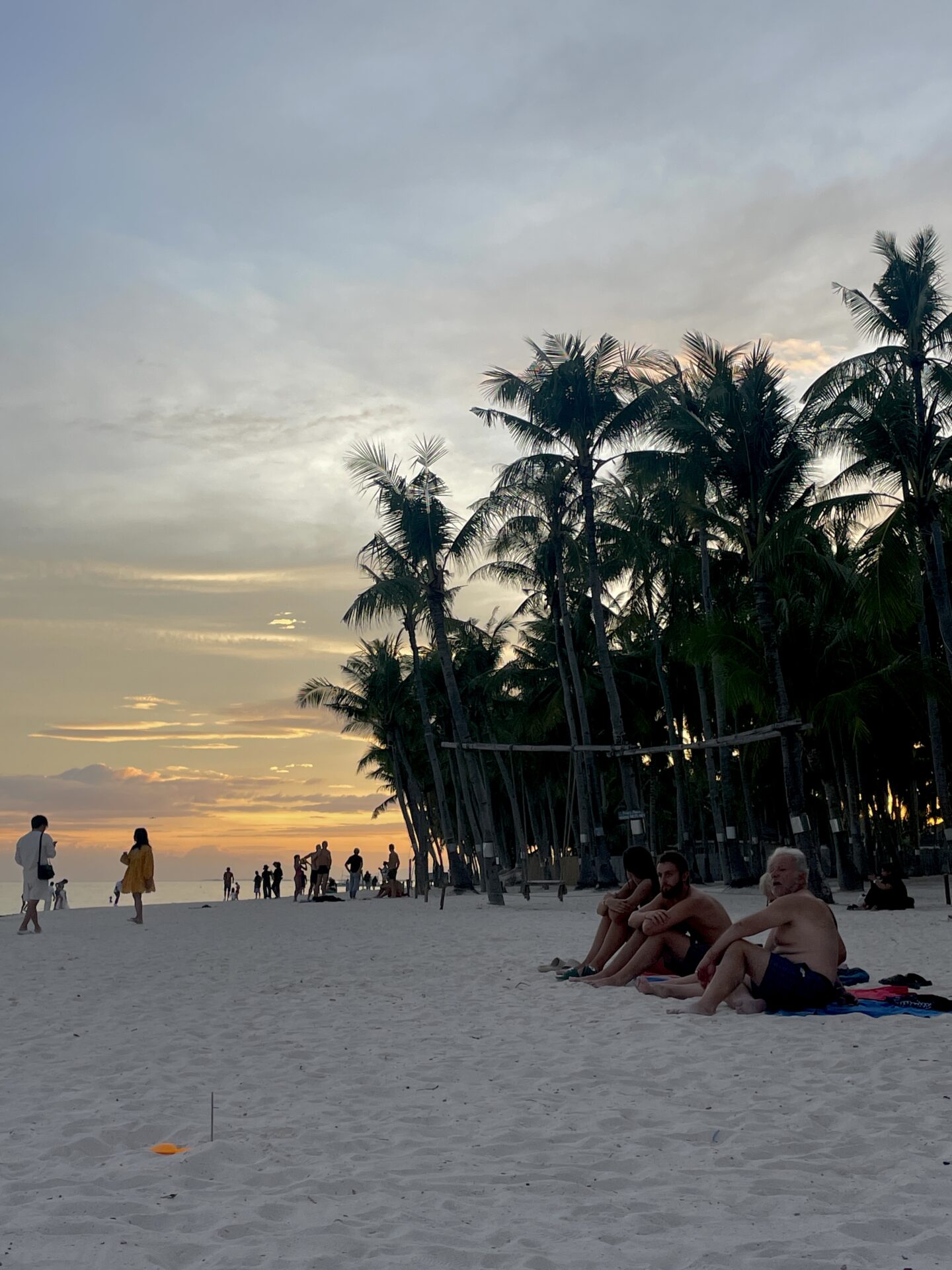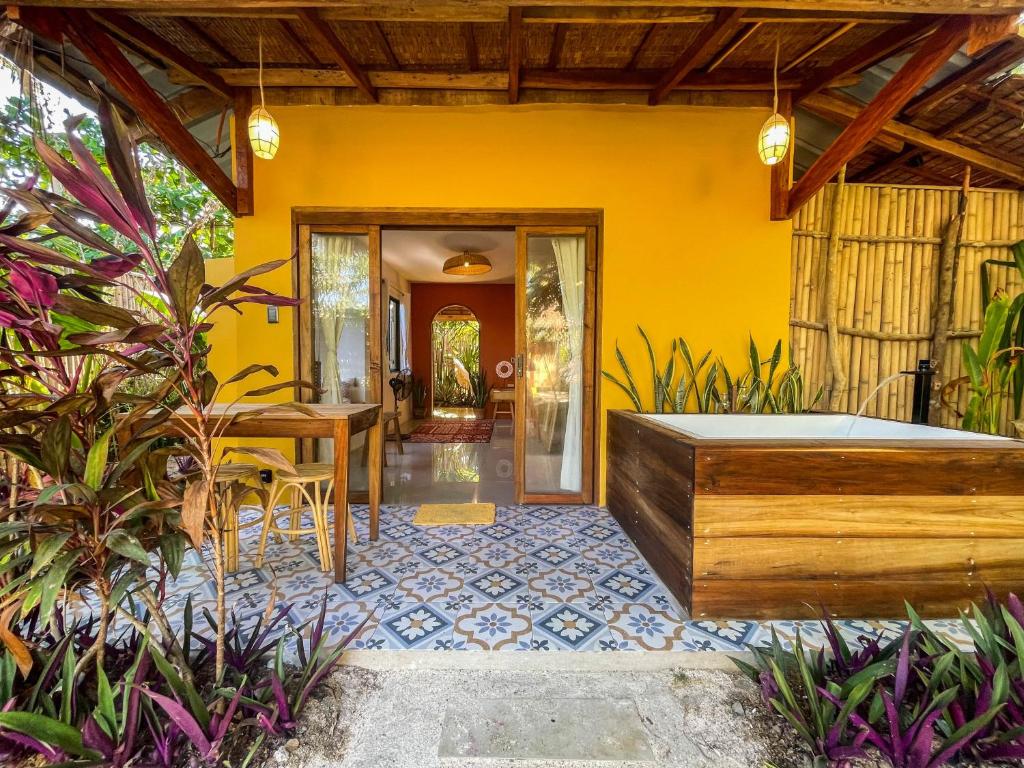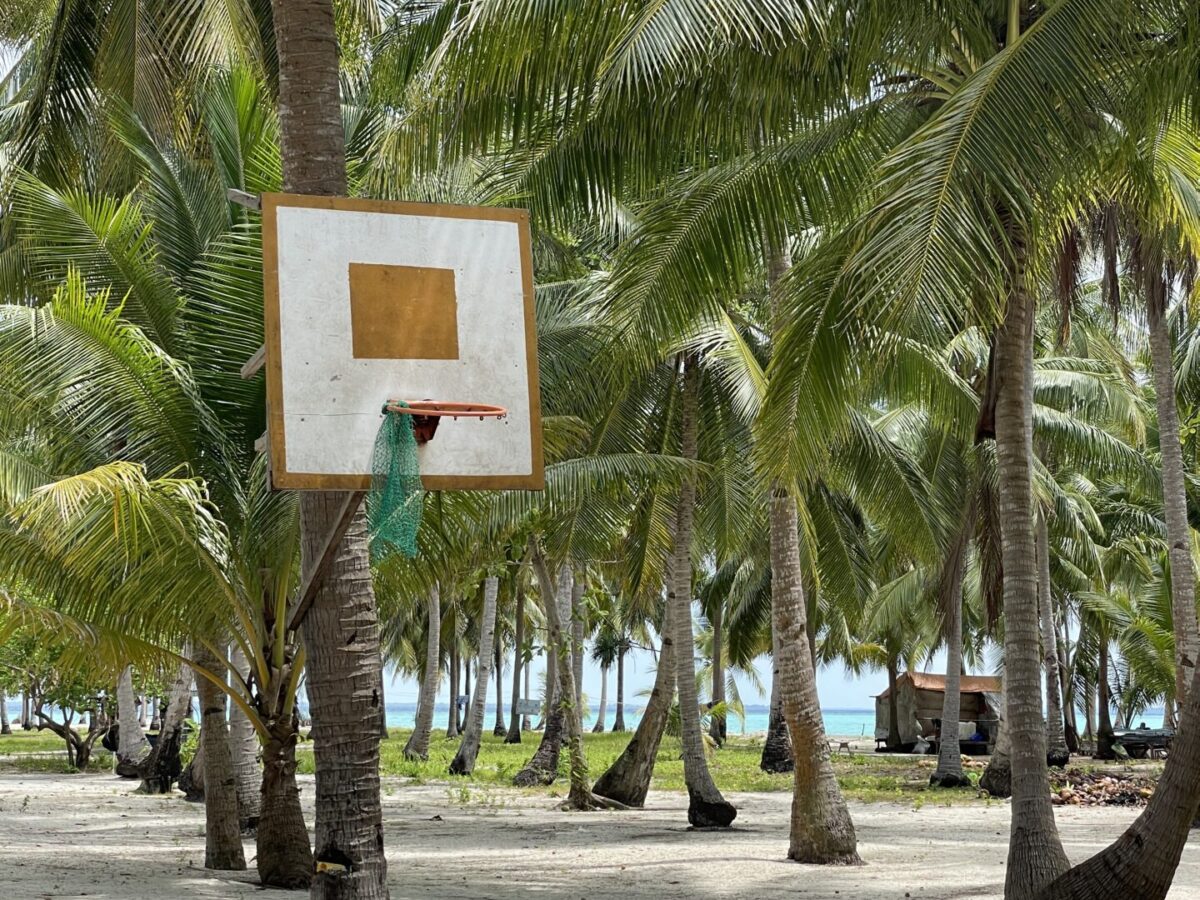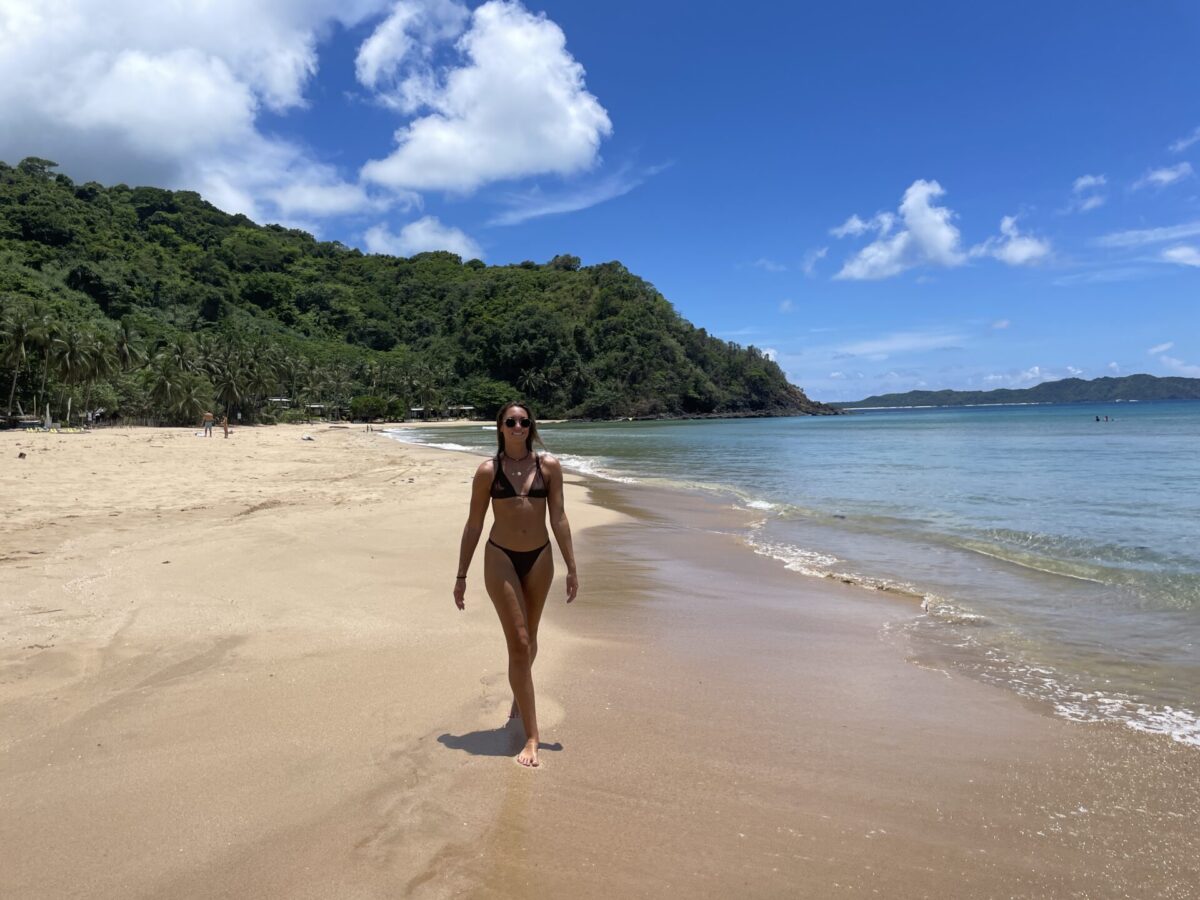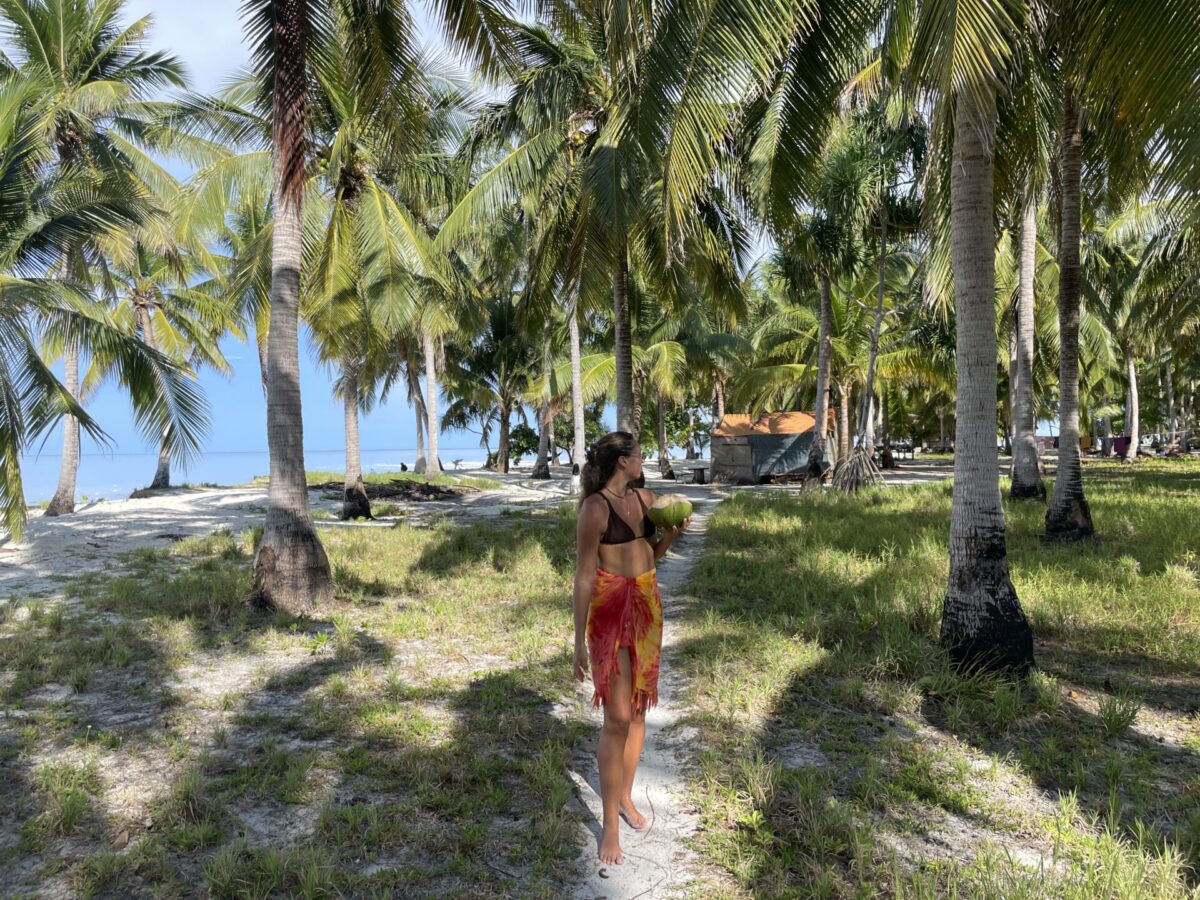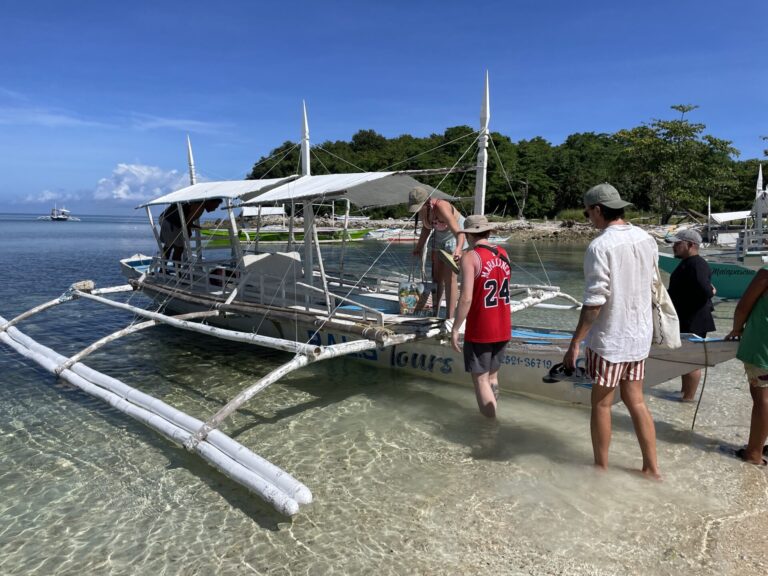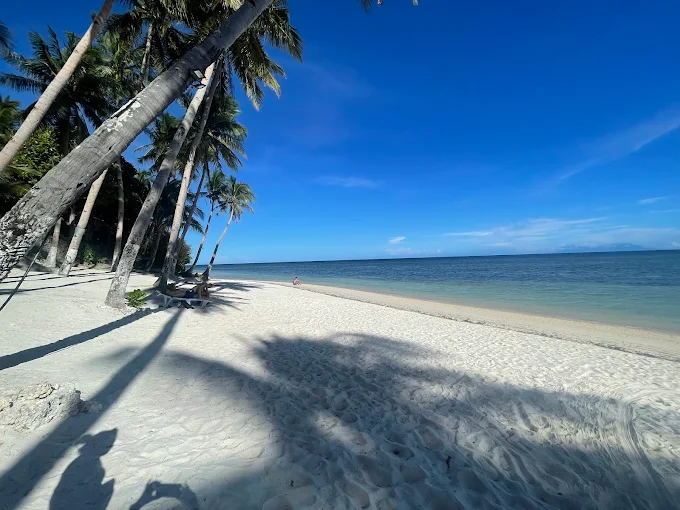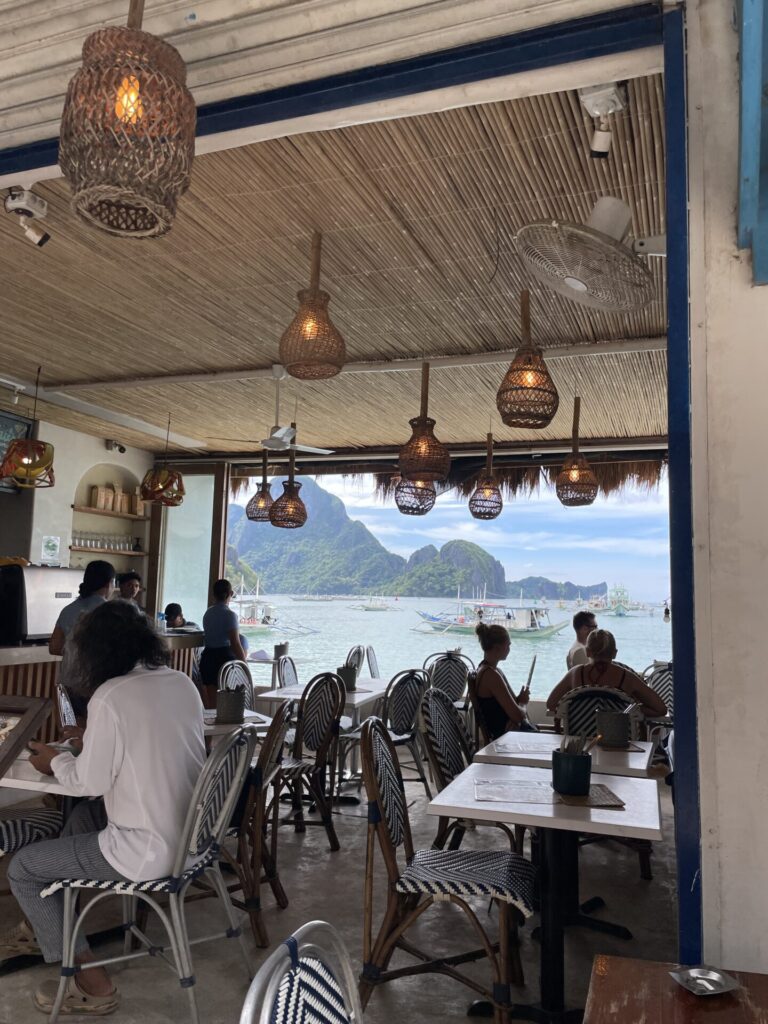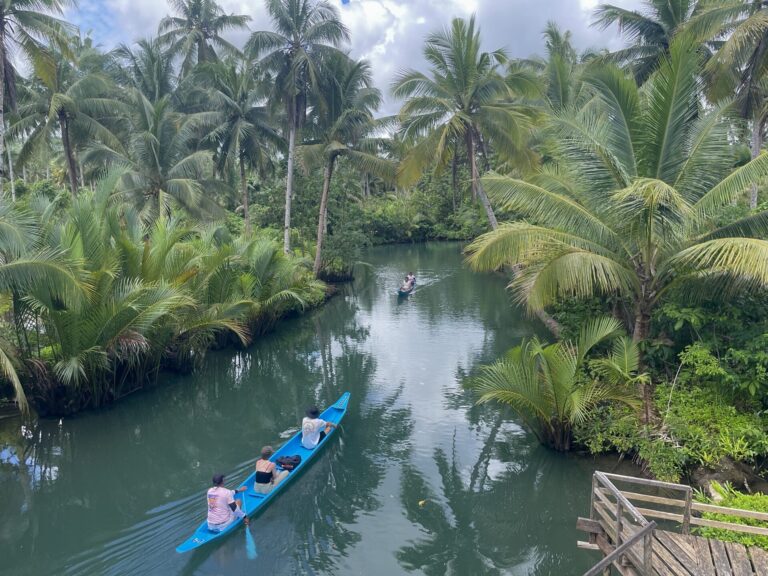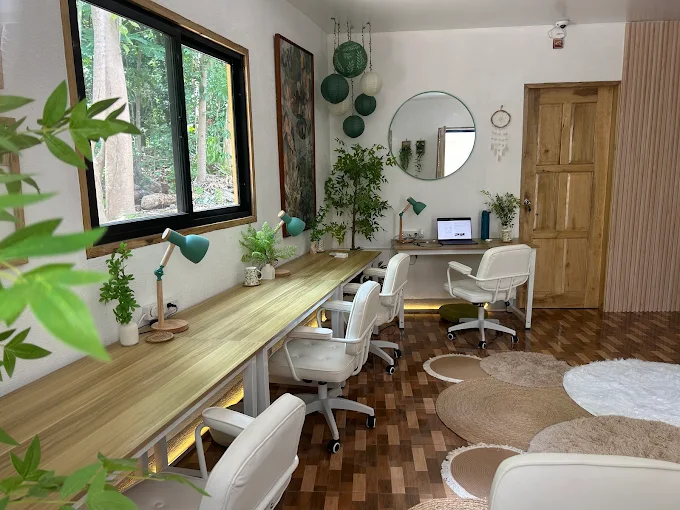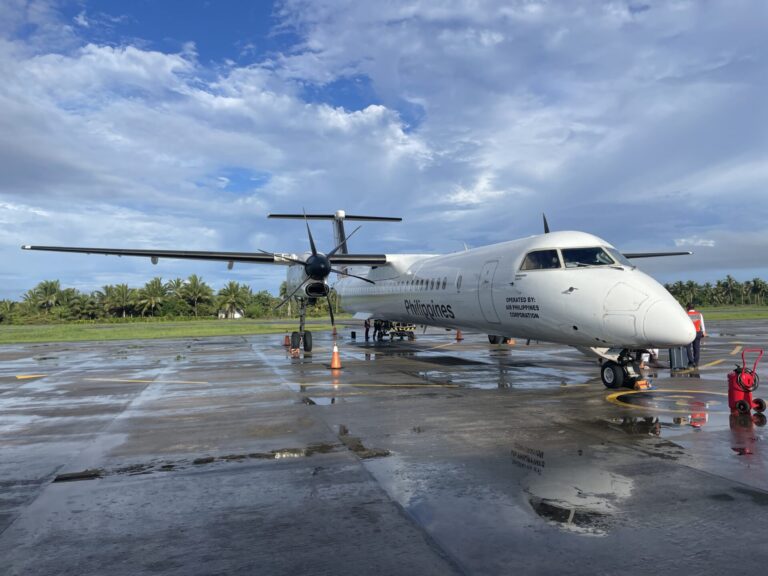Philippines Travel Cost Breakdown: Our Exact Spending for 2 Amazing Months in Paradise
After five years of full-time travel, people always ask how I afford it. Some think I’m rich, others assume sugar daddy (I wish), but really, it’s just budgeting, priorities, and a lot of uncomfortable moments.
Oliver and I aren’t backpacking on $10 a day, but we’re not splurging either. It’s more like cozy homestays, street food, and the occasional treat-yourself dinner.
Oliver and I decided to track our entire Philippines travel cost over two months to see what we were actually spending, and we’ve compiled it all for you here! From accommodation and food to tours, transport, and all the random little things that add up, we’re breaking it down so you can get a real idea of what to expect if you’re planning your own trip to the Philippines regardless of your travel style.
In a Rush? Here Are Our Favorite Hotels in The Philippines
⭐️⭐️⭐️ Las Palmas Villas & Casitas – Click here for rates & availability
⭐️⭐️ Frendz Hostel El Nido – Click here for rates & availability
⭐️Levantin Boracay – Click here for rates & availability

How Much Our 2-Month Trip To the Philippines Cost
Everyone says Southeast Asia is a super cheap travel destination, and yeah, it mostly is. But honestly, the Philippines ended up being a little pricier than we thought. We planned for about $1,000 a month each, so $2,000 total for both of us, but we ended up going over. No shocker there, travel budgets always have a way of stretching.
That’s why I wanted to lay out exactly what we spent, so you have a realistic picture before you go. It’s still way more affordable than tons of other places, just good to know what you’re getting into and it’s still possible to do the Philippines on a budget.

Our Actual Spending for 2 Months in the Philippines (for Two People)
We spent a total of $5,229.75 over 60 days. We weren’t living like broke backpackers, but we also weren’t throwing cash around just for fun. We picked a few splurges but stayed pretty mindful with our money.
| Category | Total for 2 People |
| 🏨 Accommodation | $1,452.21 |
| 🏝️ Tours & Activities | $806.53 |
| ✈️ Domestic Flights | $310.00 |
| ⛴️ Ferries | $135.50 |
| 🚌 Buses | $84.56 |
| 🛵 Scooter Rental (33 days) | $193.37 |
| 💻 Coworking Space (6 days) | $89.68 |
| 🍜 Food, Entrance Fees, Gas, Misc. | $2,156.62 |
| Total Spend (2 months) | $5,229.75 |
Our Philippines Travel Cost Per Month Per Person
- Total per person: $2,614.87
- Monthly average: $1,307.43
- Daily average cost: $43.58
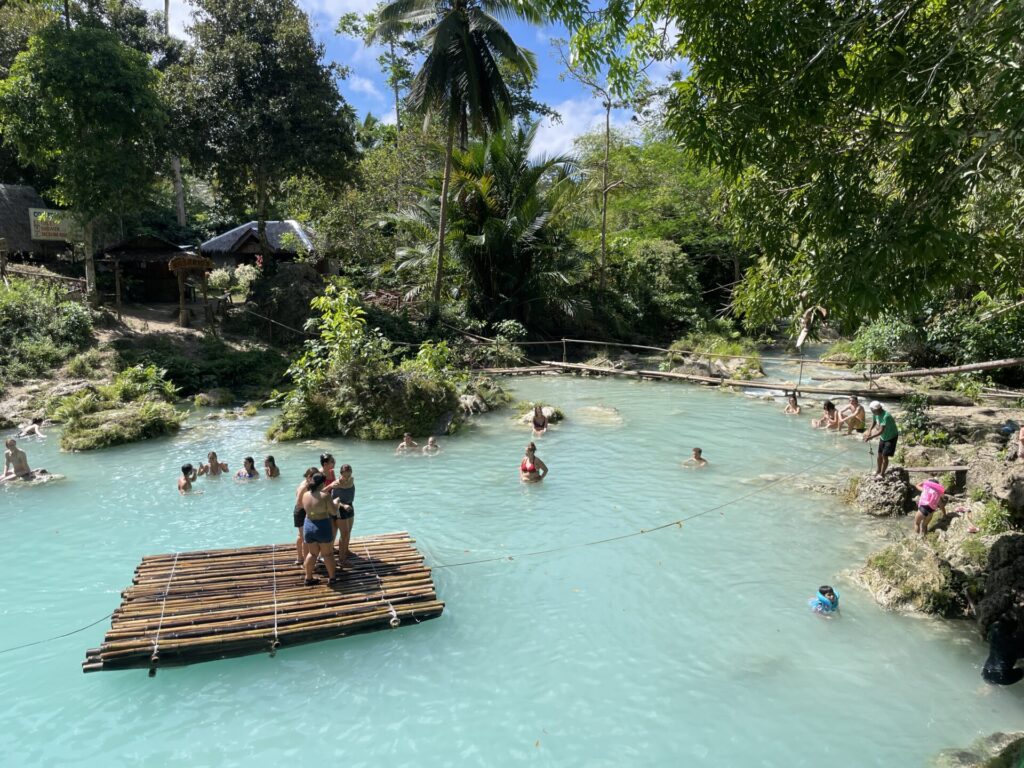


Breaking Down Our Philippines Travel Costs
Now that I’ve shared the total, I know you’re wondering, what does that actually mean for your trip? Let’s break down where every dollar went so you can get a clear idea of what to expect to spend in the Philippines
Transportation
First up, let’s talk transportation. This is one of the more frustrating parts of traveling in the Philippines. It’s a country made up of islands, which means flights or ferries are a given. Getting from one place to another usually takes a full travel day. But once you arrive, it’s pretty cheap to get around on public transportation.
Flights
We didn’t include our international flights into or out of the Philippines since those will vary depending on where you’re coming from. What we did include are all our domestic flights.
We spent $310 total on domestic flights, which covered Siargao to Cebu and Cebu to Puerto Princesa.
Prices for island flights vary a lot depending on the route and day. Right now, Siargao is one of the most unpredictable and expensive flights to buy, with one-way tickets ranging from $17 all the way up to $120 for a one-hour flight. It’s best to book as early as possible to lock in a decent price.
Quick Budget Guide: Domestic Flights (Example Prices)
- Manila to Cebu (roundtrip): ~$35
- Cebu to Puerto Princesa (one-way): ~$26
- Cebu to Siargao (one-way): $17–$120 (This is a crazy range, which is why we really recommend booking asap)
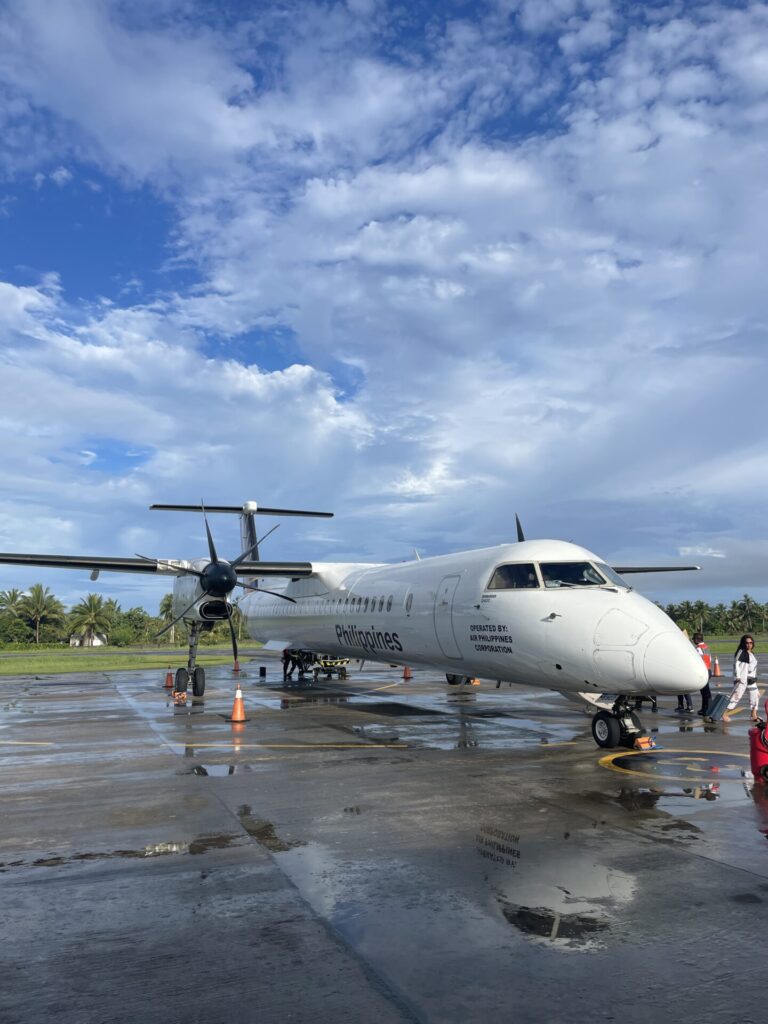
Ferries
Quite a few of the islands we visited we reached by ferry. In total, we took five ferry rides during our two-month trip:
- Cebu to Bohol
- Bohol to Siquijor
- Siquijor to Cebu
- Round-trip to Malapascua
Our total spend on ferries came out to $135.50 for two people, which felt totally worth it considering how many places we got to explore.
Ferries are honestly a great (and often underrated) way to hop between islands. They’re usually affordable, and all of ours were super smooth. I’m someone who gets motion sickness pretty easily, and even I had zero issues, but we also got lucky with perfect weather every time.
Quick Budget Guide: Ferry Prices
Currently 55 pesos = 1USD
- Cebu to Bohol – ₱800 ~$14
- Cebu to Siquijor – ₱1,600 ~$28
- Manila to Coron – ₱1,850 ~$33
- Siargao to Cebu City (via Surigao) – ~₱2,400 ~$43
💡 Tip: Check the ferry schedules in advance, especially in off-season or shoulder season. Some routes don’t run daily, and weather delays are definitely a thing. I also really recommend booking your ferry tickets online. It’s MUCH easier than at the terminal.
Check out our Philippines Ferry Guides
How to Get to Malapascua
Ferry from Cebu to Bohol Guide
Ferry to Siquijor Guide
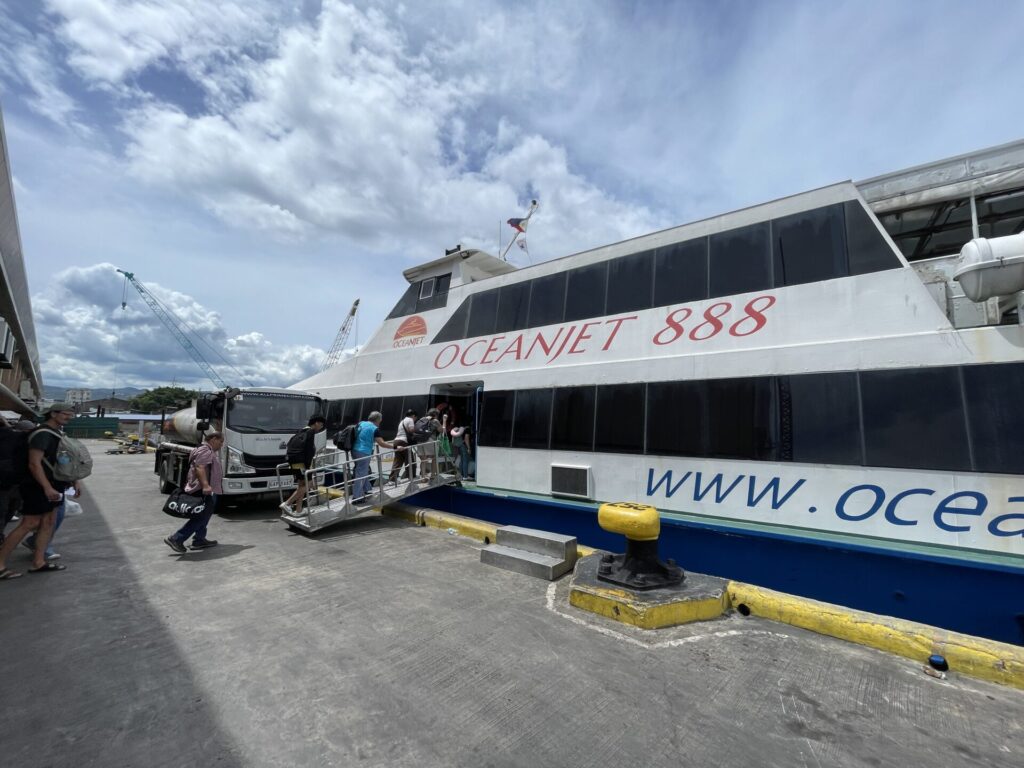

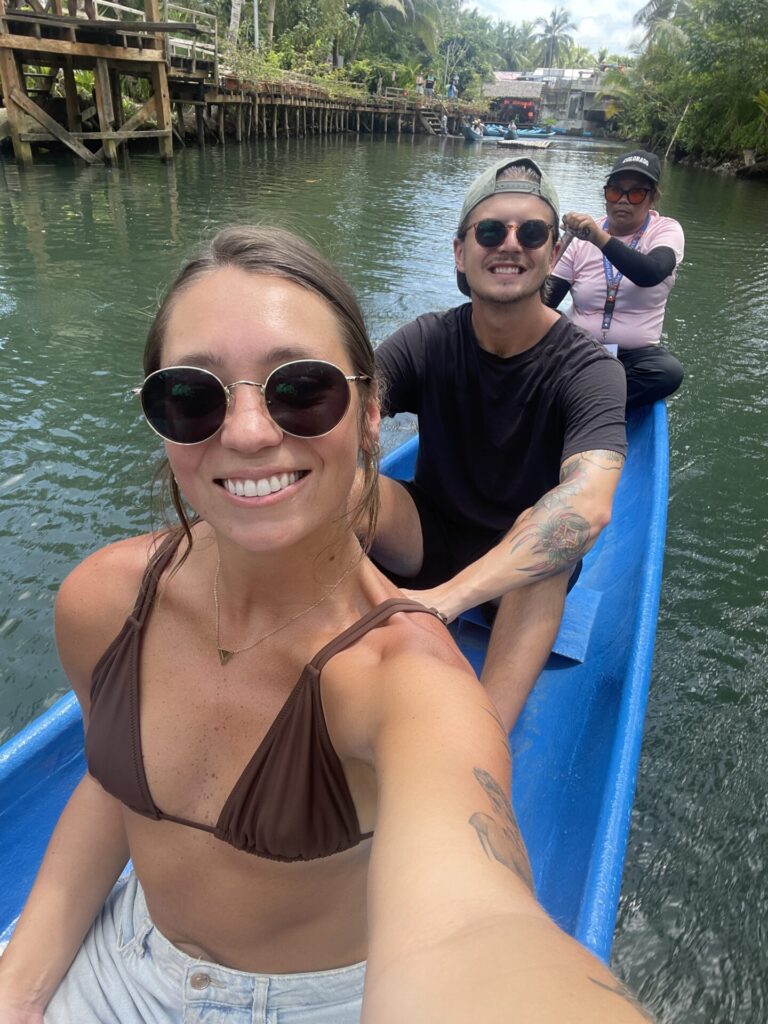
Buses & Vans
We ended up taking five bus/van rides during our time in the Philippines. Most of these were on Palawan and to/from Malapascua, and while they weren’t always the most comfortable thing in the world, they got the job done.
Here’s what we took, prices are per person:
- Puerto Princesa to Port Barton – ₱600 ~$11
- Port Barton to El Nido – ₱600 ~$11
- El Nido to Puerto Princesa – ₱700 ~$12.52
- Cebu City to Maya Port (Malapascua ferry) – ₱320 each way ~$5.73
The trip to Malapascua was the only true bus we took, big, air-conditioned, and mostly full of locals. (These stop A LOT! Making a 3 hour journey, 5 hours. So just get comfy.) The rides on Palawan were all shared vans, and those were packed tight. Every seat filled, backpacks squished, knees slightly aching. It wasn’t miserable, but don’t expect much space to stretch out.
Personally, I found the vans a little pricey for what you get, but they were still the most convenient and efficient option. If you want to save a bit, you can go with the local vans, but they usually don’t leave until they’re full and often aren’t air-conditioned. They will also stop quite a bit, letting people off or picking people up.

Tuk-Tuks & Tricycles
Before we had scooters, we relied on tuk-tuks and tricycles to get from ferry ports, airports, and bus terminals to wherever we were staying. These little three-wheelers are everywhere on most islands, and they’re a convenient way to zip around town.
Now, technically, there are official price lists posted on the vehicles… but let’s be real, no one ever charges that listed price. Especially not when you’re coming off a flight or stepping out of a bus with your backpack and a confused look on your face. You’re a tourist, and they know it. Most of the time, I just accepted the price and moved on rather than argue over a dollar.
That said, if you’re flagging one down on the side of the road (instead of at a busy terminal), the price usually drops. For example, a tuk-tuk from General Luna to Cloud 9 in Siargao cost just 30 pesos when we caught one casually.
Big tip: always ask the price before you hop in. Just like with a regular taxi, don’t assume it’s a flat rate or metered.
Quick Budget Guide: Tuk-Tuks & Tricycles
- Airport or terminal pickups: ₱150–200 for a 15 min ride ~$2.50
- Short distance rides on the islands: ₱25-50 ~$.50


Scooters
Scooters were definitely Oliver’s and my favorite way to get around the Philippines, and honestly, one of the most budget-friendly options besides just walking. Most places we visited rented scooters for about 300 to 400 pesos a day, which is like 5 to 7 bucks. The longer you rent, the more likely you are to score the lower price around 300 pesos.
We rented scooters in multiple spots, Siargao, Bohol, Siquijor, and El Nido, for a total of 33 days, and it cost us 193.37 USD altogether. Our priciest scooter day was in El Nido, where we paid 500 pesos (about 9 dollars), but it was just for one day, so we didn’t sweat it.
Scootering around gave us freedom, saved time, and kept costs low, it’s seriously a no-brainer if you’re comfortable riding one.

Accommodation
Oliver and I have definitely done our fair share of shoestring stays, like sleeping in hammocks and squeezing every dollar. But honestly, that chapter feels like ages ago… thank god! Just kidding, we had a blast back then, but now it’s all about better beds and hotter showers.
For this trip, we aimed for about $35 a night for both of us, which breaks down to around $17.50 each. Luckily, that was totally doable in the Philippines. Most of our stays averaged around $28 a night, though places like Siargao, Port Barton, and El Nido were a bit pricier, and Malapascua was a steal at just $10 a night.
In total, we spent $1,452.21 on accommodation (not counting three nights on our Balabac tour). That averages out to about $25.93 per night, which is actually $10 less than our original budget.
Most of our places were cozy little homestays with local families, clean rooms, sometimes breakfast included, sometimes not. We did hit a couple of duds, but when it’s just for a night or two, you learn to roll with it. Honestly, staying in homestays is one of the best ways to keep your budget in check, save money and get a real feel for the place.
Quick Budget Guide: Accommodation
- Hostels/Dorm Rooms: $12–$15 per night
- Mid-Range Private Rooms: $25–$35 per night
- Luxury/Resorts: $65+ per night
Whether you’re a backpacker budget traveler or ready to splurge for some AC and ocean views, there’s something for everyone in the Philippines. We stuck mostly to the mid-range and were super happy with the value but there is a wide range of hotels in the Philippines.
Here are our favorite hotels we stayed at in the Philippines
Siargao – Casitas Santa Fe
Siargao – Araw Homestay
Siquijor – Miki’s Guesthouse
Bohol – Greenspace
El Nido – Dosplaya Eco Camp
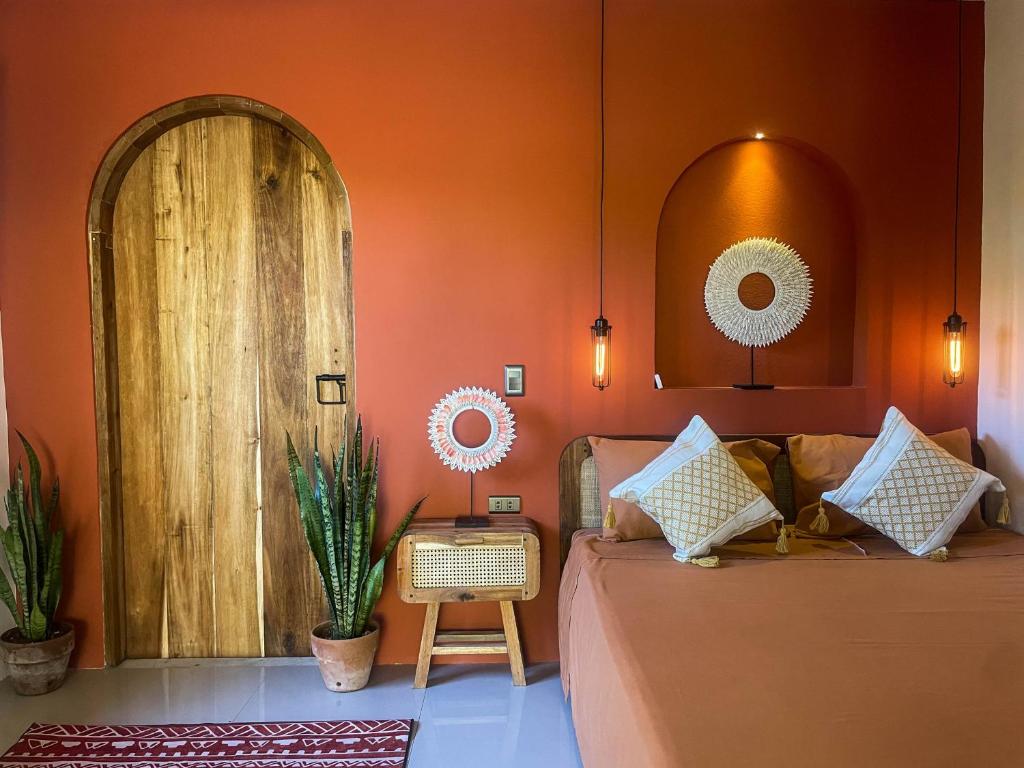
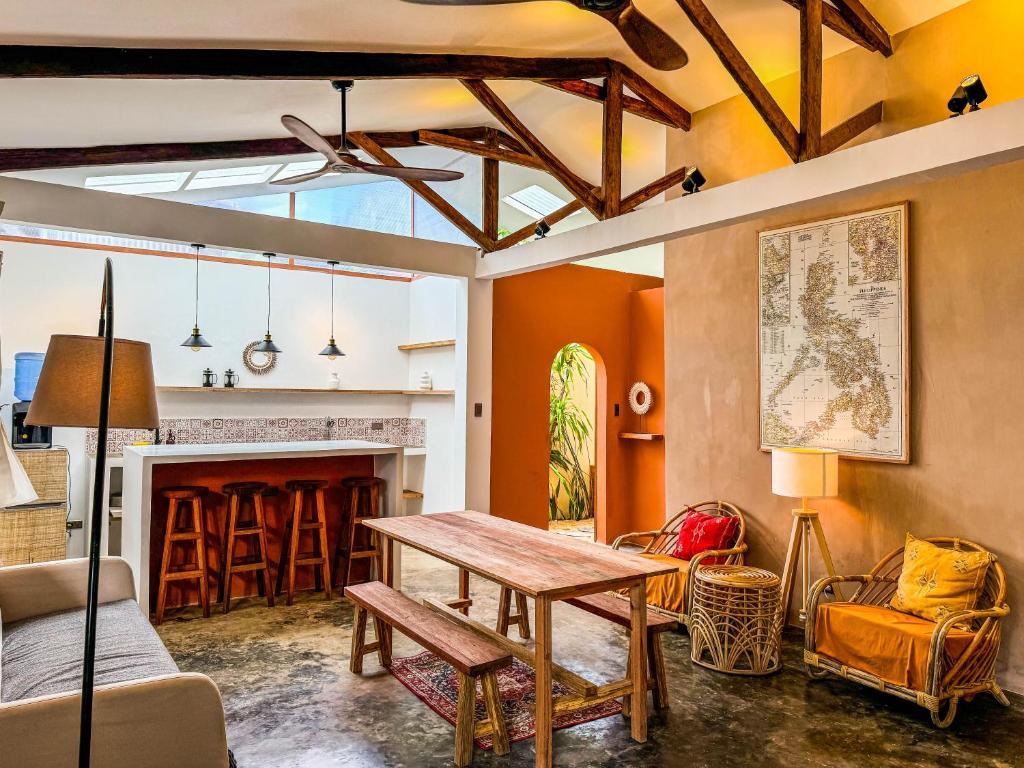
Tours & Activities
This is definitely where we went over our budget… but honestly, I think it was worth it. Travel, for us, is all about the experiences, and the Philippines is one of those places where you kinda have to get out on the water.
Our biggest expense was the 4-day/3-night Balabac tour, which was hands-down one of the best things we did. It’s a super remote group of islands in the very south of Palawan, and not a lot of travelers make it out there.
We camped on tiny islands, swam in the clearest water ever, and ate fresh-cooked meals on the beach. But—full transparency—it was rustic. We were showering outside in our swimsuits, sleeping in tents and basically being sandy all the time. And at $264 per person, it definitely felt steep for what was included. Still, it was amazing and some of the most raw natural beauty I’ve seen and I’d recommend it if it’s in your budget.
We also did Tour A in El Nido for $32.25 each, which was a blast (even with the crowds). And Oliver went diving in Malapascua, which cost $170, another big splurge, but he absolutely loved it.
If you’re more into chill, there are tons you can do on a smaller budget, too. Renting a kayak, snorkeling, or taking a local island-hopping tour doesn’t have to break the bank.
Quick Budget Guide: Tours & Activities
- Two-person kayak rental: ₱500 ~ $9
- Snorkeling tour in Malapascua: ₱500 per person ~ $9
- Tri-island hopping in Siargao: ₱1500 ~ $26+
- Tour A in El Nido: ₱1800 ~ $32+
- Surfing lesson with instructor (1 hour): ₱500 ~ $9
- Coron to El Nido Tour: ₱16,000+ ~ $300+
Digital Nomad Working Spaces
Now, this won’t apply to most people making a backpacking budget for the Philippines, but if you’re like us, working online while traveling you’ll be glad to know you can get work done on the islands. The Wi-Fi isn’t everywhere, but there are a few sweet spots that make it totally doable.
Siargao was by far the best for digital nomads. Great cafés, coworking spaces, and a community that gets it. Bohol comes in second, and Siquijor has a little something too if you’re not doing Zoom calls all day.
We loved Coco Space in Siargao, it was chill, well-designed, and had everything we needed. If you’re planning to post up and work a bit while traveling, these are the kinda prices you can expect.
Quick Budget Guide: Coworking Spaces
- Day Pass – ₱500 ~$9
- Weekly Pass – ₱2,500 ~$45
- Monthly Pass – ₱7,000 ~$125
Check out our digital nomad guides to each island!
Siargao Digital Nomad Guide
Siquijor Digital Nomad Guide
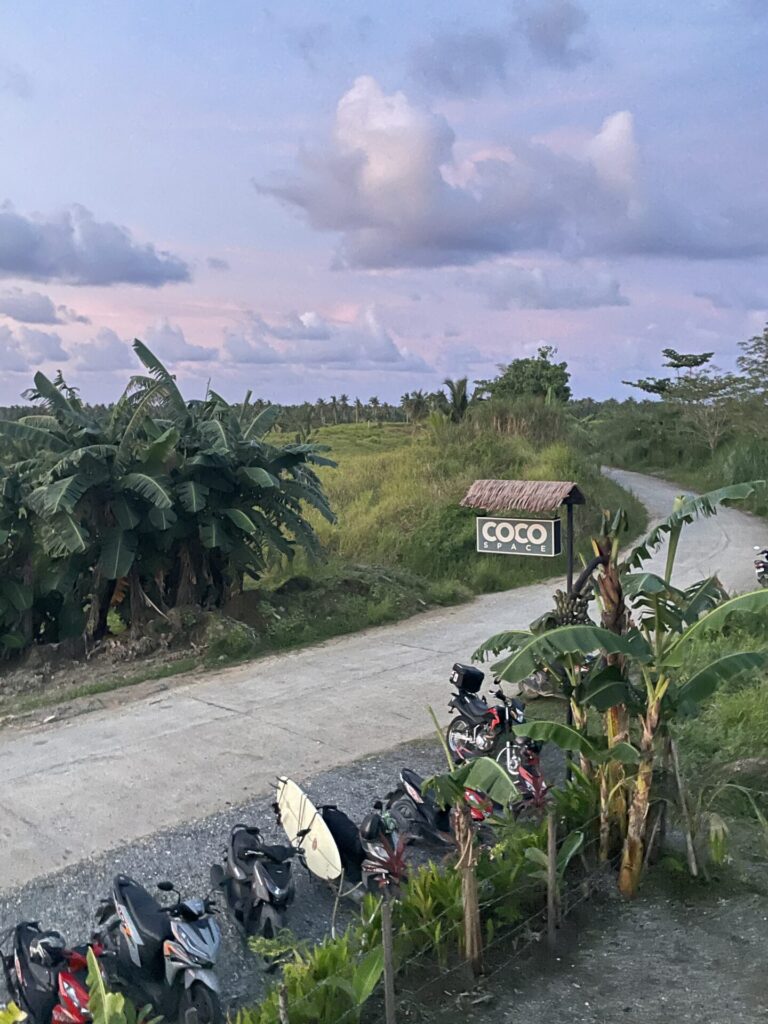
Food & Drinks
Food is where we definitely went over budget, mostly because we weren’t the biggest fans of local foods and always found ourselves at western spots. But the food prices in Philippines is really afforadable. You can eat $1.50 meals at local spots, but it’s easy to spend more when you want something besides Philippino food.
Our rough food budget was about $15 a day for both of us. Some days we spent less, other days more, especially when we were in Siargao and treated ourselves to nice dinners and coffees every morning. This island definitely has the best restaurants and the price in the Philippines for good food is pretty low compared to western countries.
We ate everything from small local eateries to casual cafés and a few tourist spots. Local food is generally affordable and delicious, but if you’re craving international dishes or fancy places, expect to pay more.
Quick Budget Guide: Food & Drinks
- Local meal at a carinderia: ₱70–150 ~ $1.25–$2.50
- Fruit smoothie: ₱80–150 ~ $1.50–$2.50
- Western-style brunch: ₱250–450 ~ $4.50–$8
- Dinner for two with drinks: ₱1,000–1,500 ~ $18–$27
- Coffee (good quality): ₱120–180 ~ $2–$3.25
- Beer: ~₱70 ~ $1.25
- Cocktails: ₱200–300 ~ $3.50–$5.37 (lots of happy hour 2-for-1 deals)
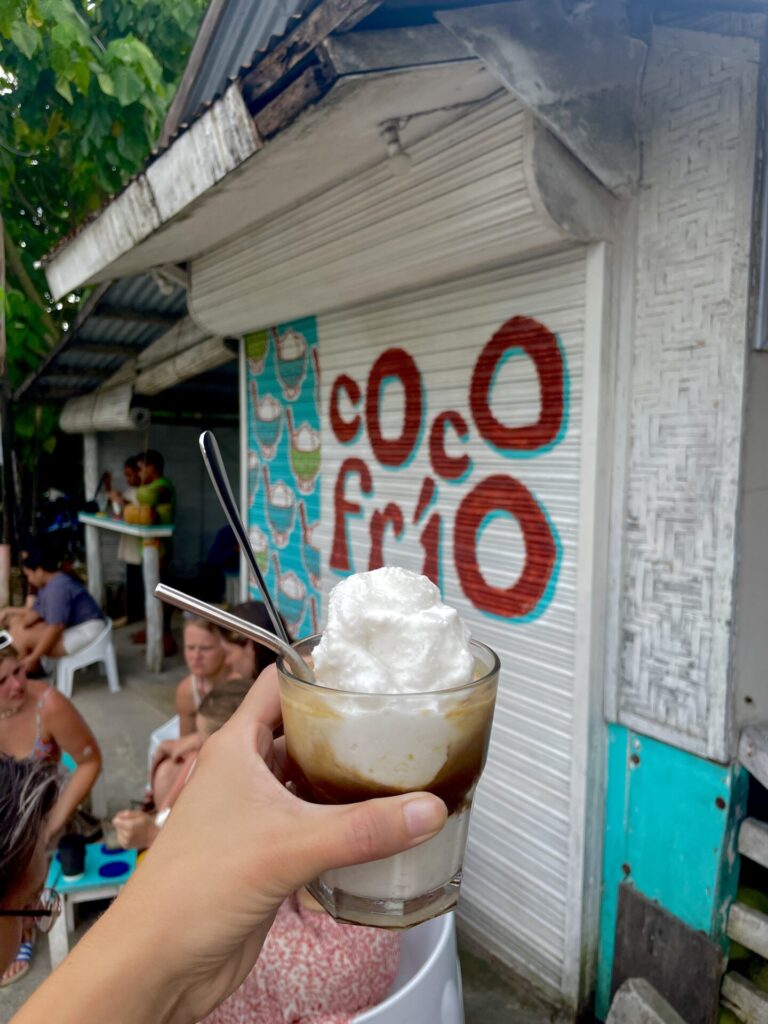

Miscellaneous Expenses
You can budget down to the cent, but trust us, there’s always something random you’ll forget.
Here are a few of the miscellaneous expenses we ran into in the Philippines:
- Scooter fuel: Around ₱200 for a full tank.
- Visa extension: ₱3,010 if you’re staying longer than the standard tourist visa.
- Entrance fees: Everywhere. We’re talking ₱20 here, ₱70 there—₱150 just to stand near a waterfall. It’s supposedly for environmental upkeep, but considering how much trash we saw in some places, we’re not totally convinced.

One thing we always include in our budget is travel insurance.
We use SafetyWing and genuinely love it. It’s $52 per month, and it’s saved us a couple of times, once when I needed $800 worth of chiropractic care in Australia, and again when Oliver had a dental emergency in Malaysia.
It’s flexible, affordable, and perfect for anyone traveling as you can pick your exact dates and it will adjust the price. It was only $18 to cover 4 days of snowboarding for Oliver in January.
If you’re planning any trip, you can check them out here. We highly recommend.
To be safe, we also suggest adding a $75–$100 buffer for unexpected costs. Whether it’s a last-minute ferry, mystery fees on your credit cards, or a random park entry fee, it’s nice to have a little wiggle room.
FAQ: How Much Money to Take to Philippines
How much does it cost to travel the Philippines?
Most travelers spend $45–$55 USD per day. That covers decent stays, tours, transport, and food without having to budget too hard.
What are prices like in the Philippines?
Philippine prices are super affordable. Meals can be $2–$8, activities range from $5 to $30, and you can find stays from $12 to $65+ depending on your style.
How much money should I take to the Philippines?
Philippines travel cost for 2 weeks is around $700–$1,000 USD per person. That gives you room for tours, food, and the random extras that always pop up. I would add about 350 USD a week if you’re staying longer!
What are food prices like in the Philippines?
Philippines food prices are low. Local eats start at ₱70 ($1.25) and a full dinner with drinks for two can cost around ₱1,000–₱1,500 ($18–$27).
Is the Philippines worth visiting?
Absolutely. The islands have some of the most incredible beaches, great diving, super friendly locals, and solid bang for your buck.
How Much You Need For Your Philippines Travel Budget
We ended up spending $1,307.43 per person overall, and honestly, we never once felt like we were hardcore budgeting or missing out. With around $45–$55 per day per person, you can totally have a great time, think nice dinners, cool tours, decent rooms, and a bit of fun splurging here and there.
The Philippines has so much to offer, and with that budget, you can enjoy it all without stressing over every peso. Just be smart about booking flights early, stay in a few homestays, and keep a small buffer for those surprise fees.
Trust us, you’ll have an amazing trip and still keep your wallet happy when traveling to the Philippines.
Check Out My Other El Nido Palawan Guides
Best Beach Resort in El Nido Palawan: My Honest Hotel Review
Beaches in El Nido Palawan: My Top El Nido Beaches
Restaurants in El Nido: Where to Eat in El Nido Palawan
How to Get to El Nido Palawan: My Full Guide on How to Get to El Nido
Is El Nido Worth Visiting?: My Honest Review
El Nido or Siargao: My Honest Comparison
Related Articles
My Complete Philippines Travel Guide: Everything You Need to Know Before Visiting in 2025
The Philippines was one of my biggest destinations this year. I spent almost three months there, living, working as a digital nomad, and exploring as much of the country as I could, and it’s definitely earned a special place in my heart. It’s for sure one of the most beautiful countries I’ve seen so far.…
My Perfect 2 Week Philippines Itinerary: What I Did & Loved in This Island Paradise
The Philippines is without a doubt one of the most beautiful countries in Southeast Asia, maybe even the world. I’m sure you’ve seen all those photos of palm trees, sandbars, incredible white sand beaches, and towering limestone cliffs. And yes, it really does look like that. But with over 7,000 islands, figuring out where to…
My Ultimate Balabac Palawan Travel Guide: What I Loved & Everything You Need to Know (2025)
Balabac is a group of small, remote islands in the far south of Palawan and honestly, it’s one of my favorite places in the Philippines. The islands I visited on that trip were absolutely stunning: untouched, remote, lined with palm trees, white sand, and amazing turquoise waters. I spent four days exploring the area, and…
